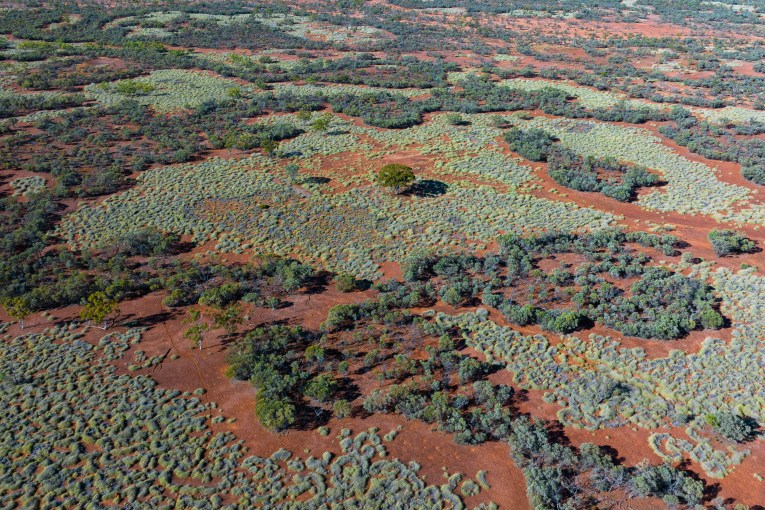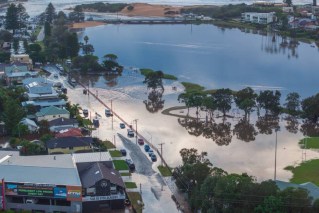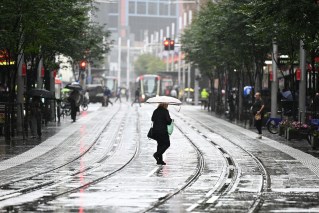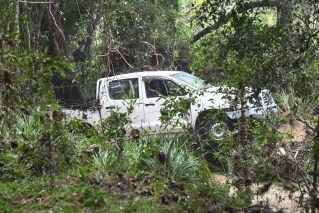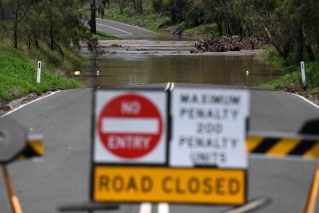Townsville residents remain on ‘crocwatch’ after floods
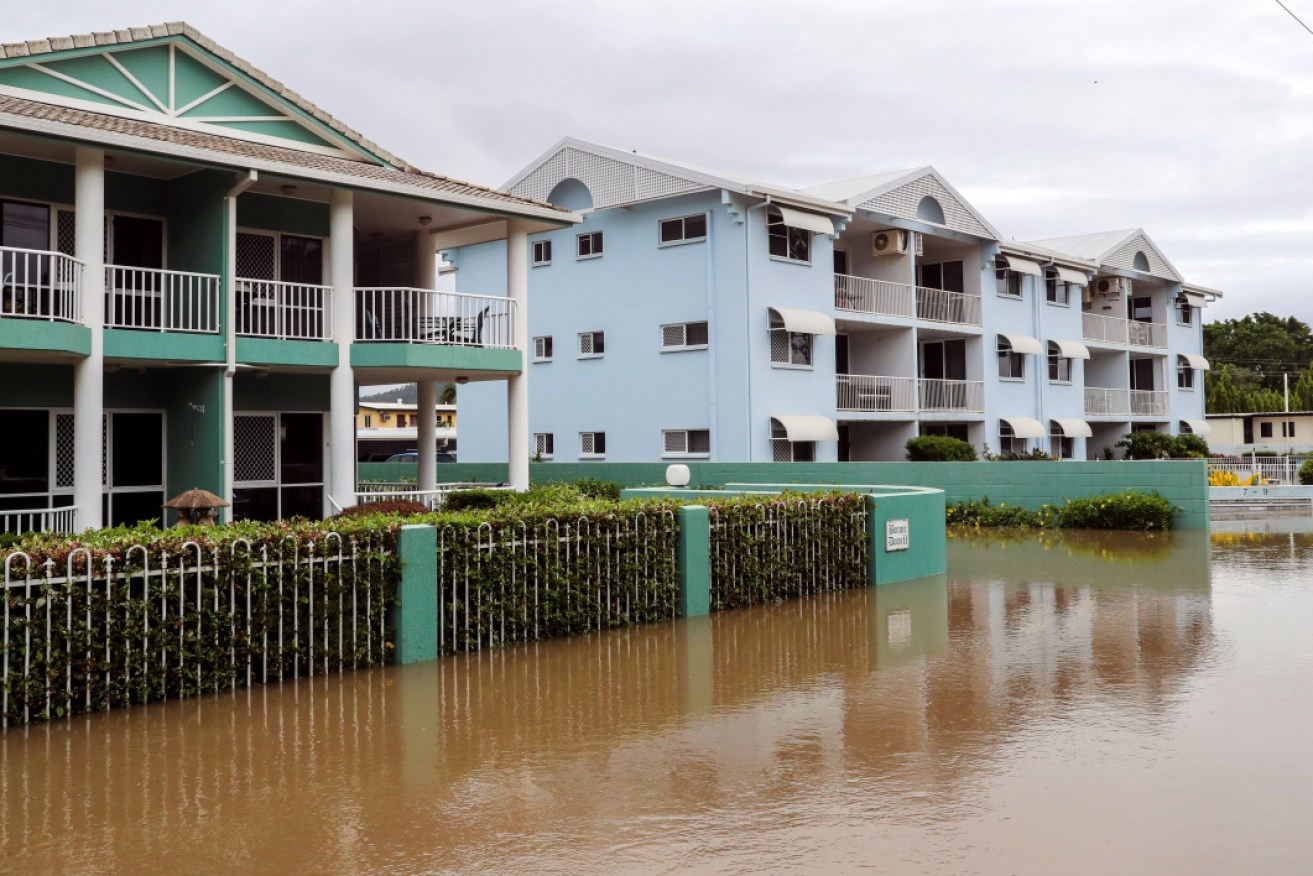
The flood waters brought crocodiles from the Ross River into residential streets. Photo: Getty
North Queensland residents are on “crocwatch” as wildlife officers try and recapture reptiles displaced by catastrophic floods to return them to the Ross River.
Freshwater crocs were washed into Townsville’s drains and waterways by once-in-a-century flooding and have been seen on roads, in backyards and even in a swimming pool.
Crocs have even been spotted as far downstream as the Port of Townsville after a year’s worth of rain fell in a week, causing the spillway gates of the Ross River Dam to be fully opened two weeks ago.
Northern Wildlife Operations manager Michael Joyce says crocs could still be lurking near sports fields, drains and the mangroves.

A crocodile in front of a Mundingburra residence during flooding in Townsville on February 4. Photo: Erin Han/AAP
Freshwater crocodiles are timid and pose very little danger to the community but may show defensive behaviour if they are cornered, so people are urged to call for help moving them back to the river.
“A healthy population of freshwater crocodiles perform an important ecological role in the Ross River above the Aplins Weir,” Mr Joyce says in a statement.
Across north and western Queensland the clean-up continues and the scale of the disaster is still being revealed.
The flood waters may have claimed four lives.
Two men died two weeks ago at the peak of the floods. One woman died of infection from contaminated floodwaters.
A third man, Justin Scott, went missing in floodwaters at Groper Creek on February 8.
More than half-a-million cattle and 30,000 sheep are believed to have perished and up to 20,000 homes had some water impact.
The Insurance Council of Australia estimates losses will exceed $606 million and the cost to the cattle industry is expected to exceed $1 billion.
Authorities are racing to dispose of dead animals as the rotting carcasses pose a high risk of botulism and Q fever.
However, Queensland Agriculture Minister Mark Furner told reporters on Monday that signs of life are emerging.
“We are still in the stage of recovery, but we are seeing positive signs. There is green pick coming through on that country.”
As clean-up efforts continue, people are being warned of the risk of infection from melioidosis.
Thirteen people have been infected due to contaminated floodwater, including the woman who died.
Meanwhile, 120 Victorians will lend a hand with the recovery over the next five weeks.
-AAP
